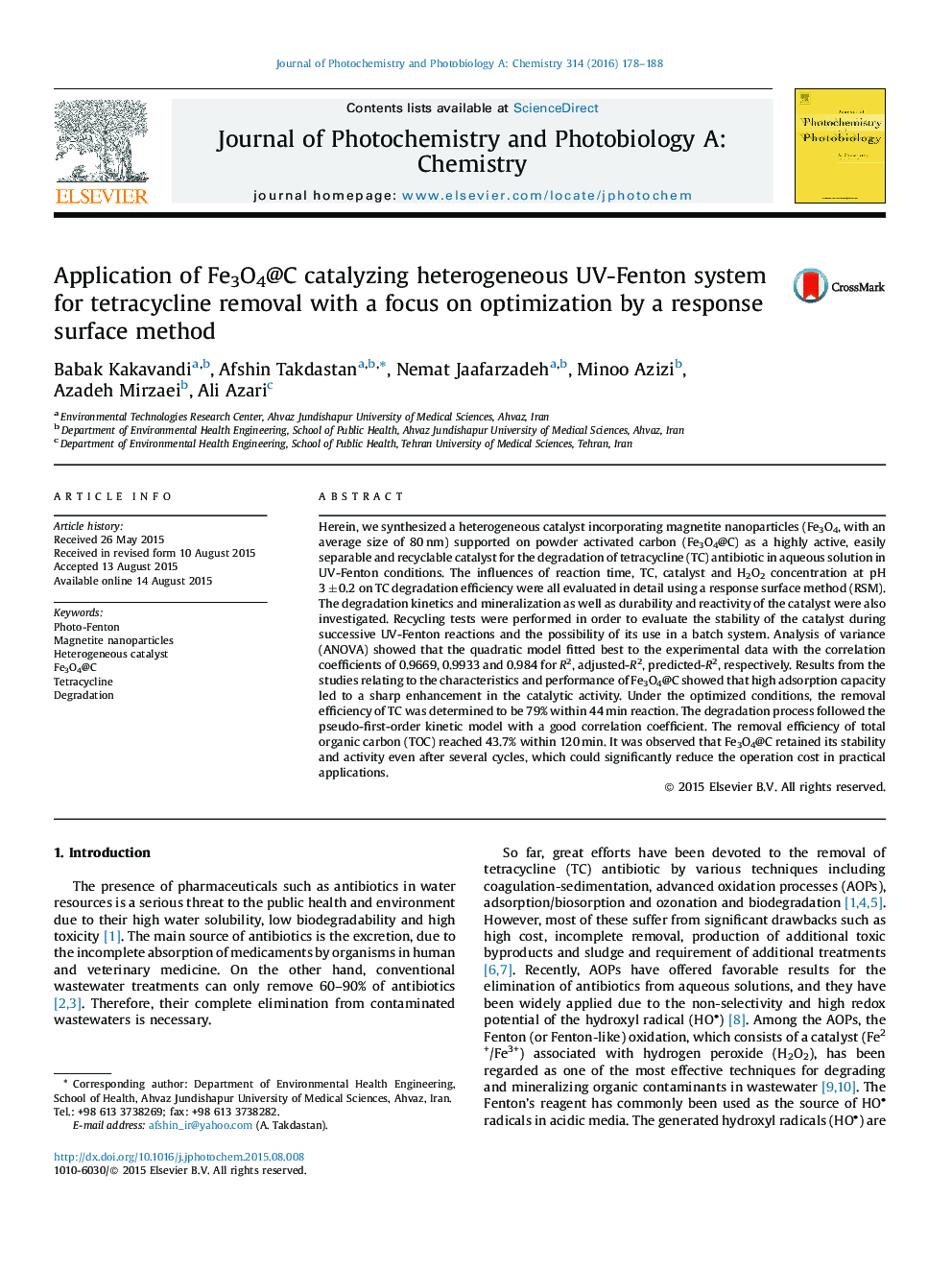| کد مقاله | کد نشریه | سال انتشار | مقاله انگلیسی | نسخه تمام متن |
|---|---|---|---|---|
| 26379 | 43949 | 2016 | 11 صفحه PDF | دانلود رایگان |

• Magnetic composite of Fe3O4@C was successfully utilized in UV-Fenton system.
• Kinetic models of reaction, reusability and stability of catalyst was investigated.
• TC and TOC removal were reached 87 and 37% after 5 cycles of reaction, respectively.
• Fe3O4@C showed a good long-term stability in UV-Fenton system
• High activity, easily separation and operational stability were main features of Fe3O4@C
Herein, we synthesized a heterogeneous catalyst incorporating magnetite nanoparticles (Fe3O4, with an average size of 80 nm) supported on powder activated carbon (Fe3O4@C) as a highly active, easily separable and recyclable catalyst for the degradation of tetracycline (TC) antibiotic in aqueous solution in UV-Fenton conditions. The influences of reaction time, TC, catalyst and H2O2 concentration at pH 3 ± 0.2 on TC degradation efficiency were all evaluated in detail using a response surface method (RSM). The degradation kinetics and mineralization as well as durability and reactivity of the catalyst were also investigated. Recycling tests were performed in order to evaluate the stability of the catalyst during successive UV-Fenton reactions and the possibility of its use in a batch system. Analysis of variance (ANOVA) showed that the quadratic model fitted best to the experimental data with the correlation coefficients of 0.9669, 0.9933 and 0.984 for R2, adjusted-R2, predicted-R2, respectively. Results from the studies relating to the characteristics and performance of Fe3O4@C showed that high adsorption capacity led to a sharp enhancement in the catalytic activity. Under the optimized conditions, the removal efficiency of TC was determined to be 79% within 44 min reaction. The degradation process followed the pseudo-first-order kinetic model with a good correlation coefficient. The removal efficiency of total organic carbon (TOC) reached 43.7% within 120 min. It was observed that Fe3O4@C retained its stability and activity even after several cycles, which could significantly reduce the operation cost in practical applications.
Journal: Journal of Photochemistry and Photobiology A: Chemistry - Volume 314, 1 January 2016, Pages 178–188